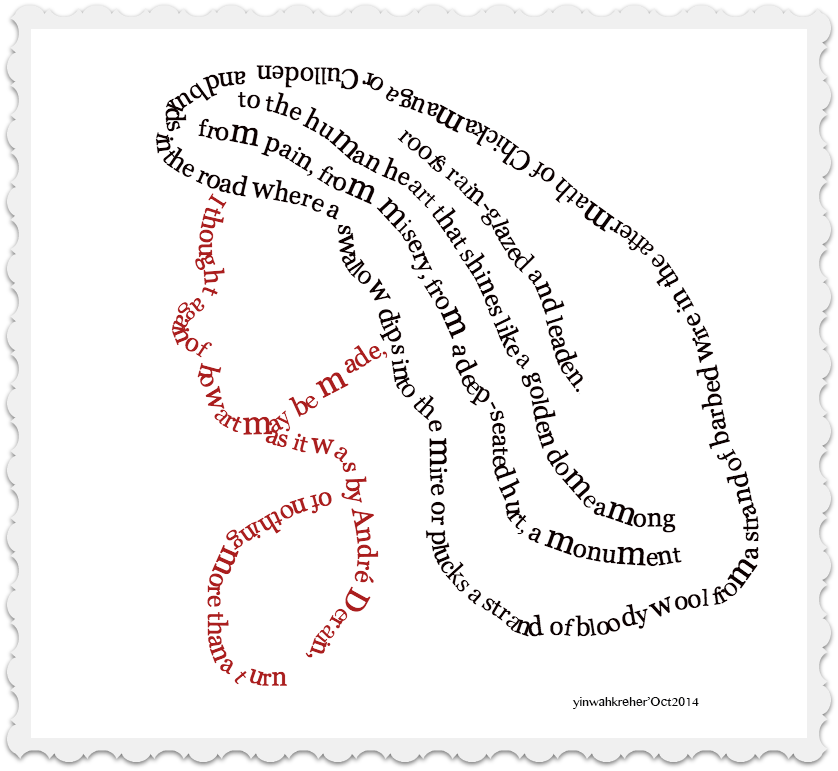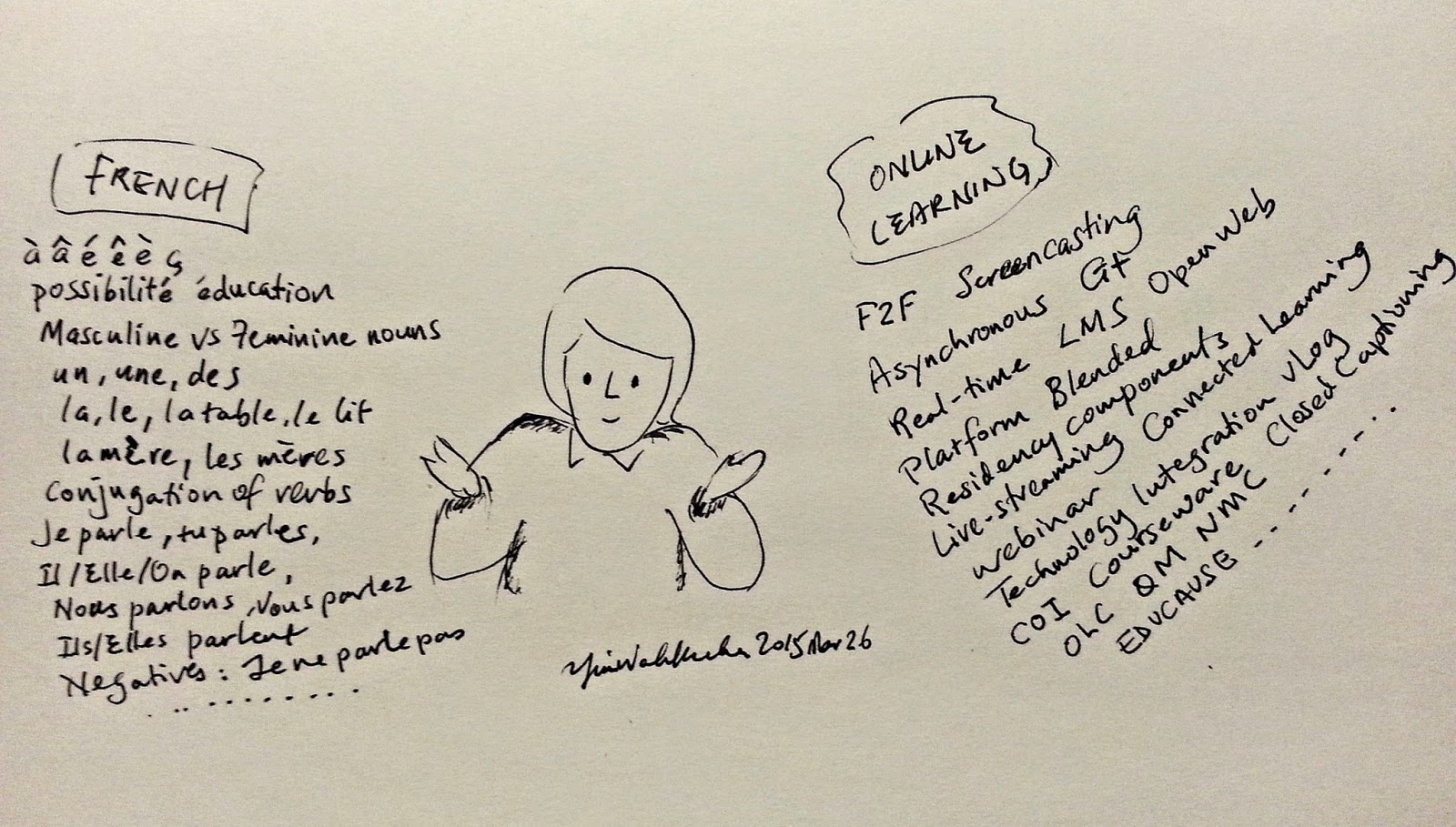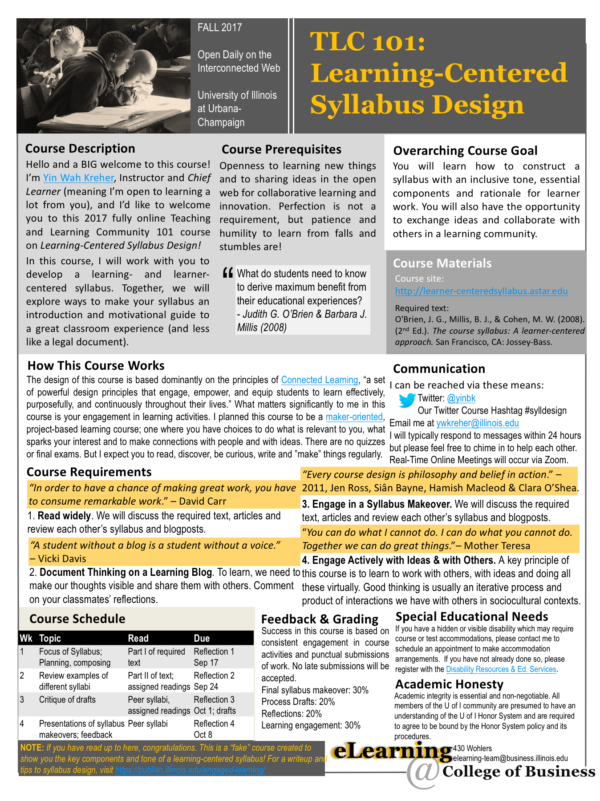Help! I am teaching online
“We have adjunct instructors who work fulltime and are unable to attend any of the ALT Lab’s programs.”
 |
| Face the Fear. Image Description: A woman jumps off the cliff and dives into the ocean of online teaching. There are people standing in the online ocean waiting to receive her. |
2. Face the Fear: Start Learning and Connecting
There is much to be said about building an arsenal of digital tools and sharpening the tools you are going to be using in your online course. Online communities and communication are mediated by technology. The 3 Ws (World Wide Web) might sound scary, and overwhelming, with its infinite possibilities for learning and also, abuse. But I don’t see any short-cuts to becoming an effective online teacher and facilitator. I am not one to prescribe specific steps, but joining a community of folks who share your interest might be the best place to start learning about online pedagogy and tools. For examples,
- Read, watch, listen. Articles, e-books, blogs. Hybrid Pedagogy; what better place to start than in the in-between space? Consider this article by Jesse Stommel on Online Learning: A Manifesto. If you find a chance, talk about it with some other instructors from your program.
- Post blog comments, AND, then start blogging to share information and news with your students and colleagues from near and far.
- Create a Twitter account (My colleague Tom Woodward shared this interesting article about Twitter, Why I Use Twitter)
- Join Google+ communities of your interests (You need a GMail account)
I believe teachers have to carve out a safe online space for themselves to experiment and learn with others continuously, thus modeling for their students what it is like to learn from a global audience. We can no longer think of learning as something that is solely confined to a classroom. Or wait to enter a formal space to learn with others. Learn what you can with what time you have. Deliberately, on the go, just-in-time. Learn to steal away for microlearning moments. Develop learning habits that suit your schedule and learning disposition.
Someone told me she wouldn’t teach online until she has learned enough about online teaching. “Enough” is a subjective term. It is wise of her to give herself time to prepare adequately for online teaching and not try to replicate a face-to-face class online. In fact, a radical change in mindset is a must for new online instructors. Armed with this readiness to embrace change and some knowledge of how to make the change, one can begin to take the plunge to decide to teach online. However, we need to recognize that no course is going to be perfect from the get-go. Although we may have a plan and a course ready by the time we are in a position to push off from the starting-blocks, the course will be subject to some minor (?) revisions as it progresses through the semester. I don’t know any teacher with a heart for teaching who doesn’t improvise as s/he teaches throughout the semester.
This post is necessarily a simple reductionistic post about getting started. It does not pretend to be a solution that responds to all the complexities involved in preparing faculty to teach online.
I welcome comments anyone may have to help new online faculty get started through informal learning.
Reference
Parrish, P. (2006). Design as storytelling. TechTrends, 50(4), 72-82)



